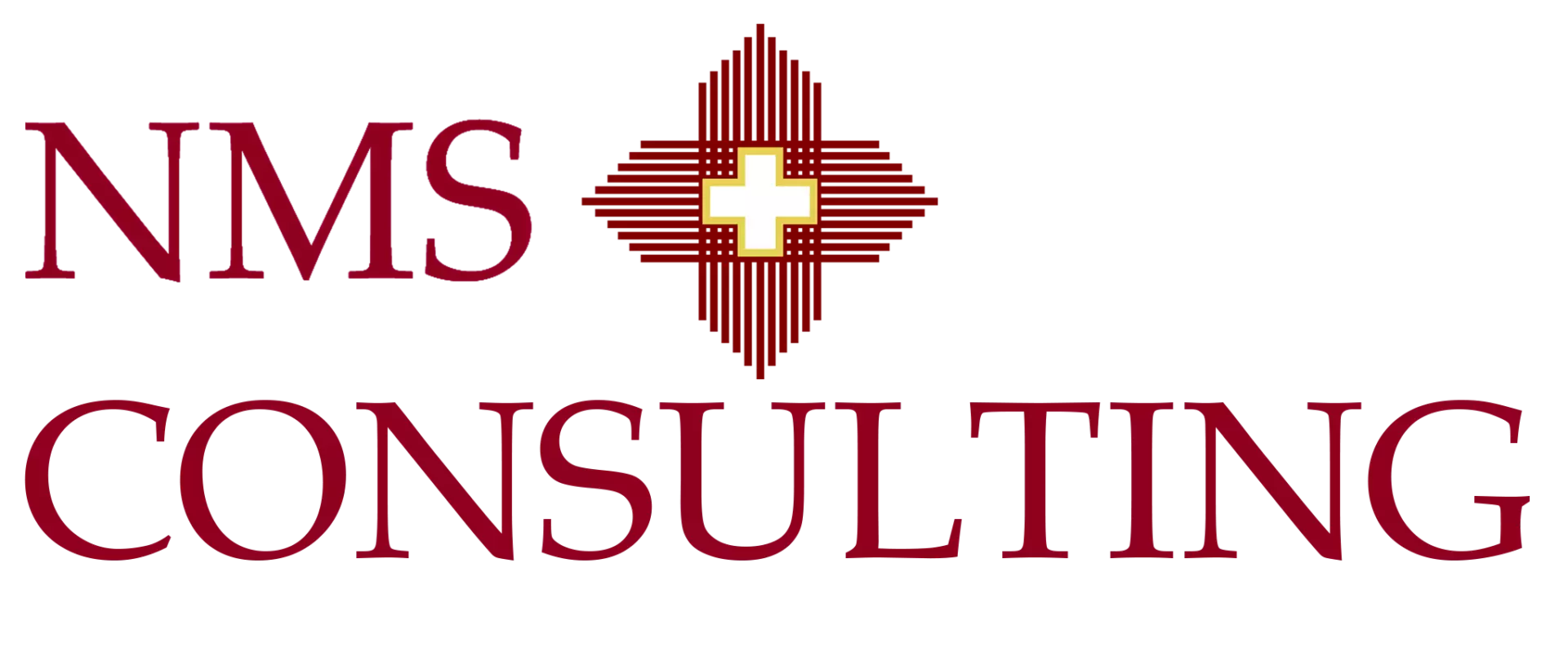Cyber Security and Data Protection: Practical Guide for Business Leaders

NMS Consulting
November 15, 2025
Cyber Security and Data Protection: Practical Guide for Business Leaders
Cyber security and data protection are now core parts of business performance, not only technical topics. This guide explains key risks, practical controls, and how leadership teams can strengthen their position over time.

What is cyber security and data protection?
Cyber security and data protection describe the practices, controls, and governance that keep systems and information safe from misuse, loss, or unauthorized access. Cyber security focuses on the technology side, while data protection covers how information is collected, processed, stored, and shared.
When both are handled well, organizations can adopt new technologies, use data for growth, and meet regulatory expectations with more confidence. When they are weak or fragmented, even small incidents can become costly business problems.
Many organizations use service lines such as
Cybersecurity and Data Privacy Consulting
and
Digital and Technology Consulting
to bring structure and additional capacity to these areas.
Why cyber security and data protection matter for businesses
For most organizations, information and digital services sit at the center of how they compete. Revenue, reputation, and operations all rely on trustworthy systems and reliable data. Cyber security incidents and data protection failures can interrupt that trust.
Typical consequences include:
- Business interruption and lost productivity during and after an incident
- Direct financial losses, such as fraud, extortion, or response costs
- Regulatory investigations and fines for weak controls or reporting
- Damage to customer, partner, and investor confidence
- Higher internal workload while teams recover normal operations
Thought pieces such as
Why Cybersecurity Awareness Matters for Business Success
highlight how day to day behavior from employees and leaders can either reinforce or undermine security and privacy goals.
Common cyber security and data protection risks
Every organization has its own risk profile, but several threats appear again and again in incident reports.
Social engineering and human error
Phishing, business email compromise, and related attacks target people rather than systems. Mistakes such as sending information to the wrong recipient or misconfiguring access rights are also frequent causes of data exposure. The article
The Human Error in Cybersecurity
explores this topic in more depth.
Ransomware and malware
Malicious software can encrypt data, disrupt operations, or be used to steal information. Attackers often combine social engineering with technical weaknesses such as unpatched systems or weak remote access controls.
Third party and supply chain issues
Many businesses rely on partners for hosting, software, and data processing. Weak controls at a supplier can create incidents at the client, especially when access is highly trusted or data is shared in bulk.
Weak data protection practice
Risks can also stem from incomplete data inventories, unclear retention rules, and limited privacy by design. These weaknesses may not be visible until a regulator asks questions, a customer exercises their data rights, or a security incident exposes personal information.
Core principles for cyber security and data protection
Although technical detail can be complex, several basic principles appear across security and privacy standards worldwide.
Confidentiality, integrity, and availability
Security controls help keep information confidential, complete, and available when needed. This often involves access management, encryption, logging, backup routines, and recovery planning.
Least privilege and need to know
Users and systems should have only the access they need to do their work. Clear roles, segmented networks, and periodic access reviews reduce the chance that one compromised account leads to widespread damage.
Privacy by design and by default
Data protection laws expect organizations to embed privacy into processes and systems. This includes limiting data collection, avoiding unnecessary copies, setting appropriate retention periods, and giving individuals transparent choices.
Risk based prioritization
Not all assets are equally important. Modern security and data protection programs map information and systems by criticality and then assign controls and monitoring effort in line with the potential impact of failure. Articles such as
Risk Management Consultancy: Safeguarding Your Business
show how this approach applies more widely across enterprise risk.
Building a practical cyber security and data protection program
Many organizations structure their security and privacy work into a program that is easy to explain to boards, regulators, and employees. The steps below offer a simple pattern that can be adapted by size and sector.
1. Understand assets and obligations
- Map key systems, data sets, and business processes
- Identify legal, regulatory, and contractual requirements
- Clarify which business units and suppliers touch sensitive data
2. Assess current posture
- Review policies, technical controls, and daily practices
- Compare against relevant security and privacy standards
- Run targeted testing such as vulnerability scans and phishing exercises
3. Define a practical roadmap
- Prioritize gaps based on risk, cost, and time to deliver
- Assign clear owners, milestones, and success measures
- Balance quick wins with structural improvements such as identity platforms or data classification
4. Invest in people and culture
- Train employees on phishing, password hygiene, and secure handling of information
- Tailor messages to leaders, technical teams, and front line staff
- Measure uptake using simple indicators and adjust material where needed
5. Test, monitor, and improve
- Use regular exercises, audits, and technical monitoring to spot new issues
- Run post incident reviews whenever something goes wrong
- Update your roadmap as technology and regulations change
Practical articles such as
Data Privacy and Cybersecurity Tips for 2023
provide ideas for the quick wins and awareness pieces that support this program.
Cyber security, data protection, and regulatory compliance
Security and privacy are closely linked to regulation. Supervisors expect organizations to show that they understand their obligations and can demonstrate control in practice, not only on paper.
Common elements of a compliance ready program include:
- Clear policies for security, privacy, and acceptable use
- Records of processing activities and data sharing agreements
- Risk assessments for new projects that use personal data or critical systems
- Procedures for handling incidents and notifying regulators where required
- Evidence of regular reviews, testing, and staff training
Articles such as
Data Privacy and Cybersecurity Regulations: Introduction
and
Management Consultants: Fortifying Cybersecurity and Data Privacy Compliance
discuss how legal and operational teams can work together to meet these expectations.
Many clients also link their cyber programs to broader
Risk Management Consulting
and
Regulatory Compliance Consulting Services
so that security and privacy are part of a single risk and control picture.
Role of consultants in cyber security and data protection
Internal teams know their business and systems best, but they may not always have the time or specialist skills needed for certain projects. External consulting support can help in several ways.
- Independent assessment of current security and privacy posture
- Design of target operating models, roles, and reporting for security and privacy functions
- Support for major programs, such as identity and access management upgrades or cloud moves
- Help with regulatory interactions, audits, and remediation planning
- Coaching for leadership teams and boards on cyber risk and oversight
This is most effective when consulting teams combine cyber and privacy skills with wider experience in digital, risk, and change, as described in
Digital Consulting Services Guide 2025
and related material.
How NMS Consulting supports cyber security and data protection
NMS Consulting works with clients to design and deliver cyber security and data protection programs that support growth and compliance. The
Cybersecurity and Data Privacy Consulting
service line brings together specialists in technology, risk, legal, and change.
Typical areas of support include:
- Security and privacy posture assessments with risk rated findings
- Design of practical security and data protection programs aligned with business goals
- Guidance on identity and access, incident response, and security operations
- Support for privacy programs, including data inventories and records of processing
- Change management, training, and communications for new security and privacy practices
Work is often connected with
Digital and Technology Consulting
so that security and privacy are built into new platforms and services from the early design stages.
FAQ on cyber security and data protection
- What is the difference between cyber security and data protection?
- Cyber security focuses on defending systems, networks, and devices against attacks and misuse. Data protection focuses on how information is collected, stored, used, and shared in line with law and customer expectations. A strong program treats these areas as connected rather than separate.
- How often should we review cyber security and data protection controls?
- Many organizations run an annual review covering key controls, risk assessments, and training. High risk areas such as privileged access or critical systems often have more frequent checks, backed by technical monitoring and internal audit.
- Which regulations affect cyber security and data protection?
- The answer depends on your locations, customers, and sectors. Privacy laws, sector security rules, and data transfer restrictions can all apply. Legal and compliance teams usually work with security and privacy leads to keep a clear overview of requirements.
- How much should a mid sized business invest in cyber security and data protection?
- There is no single correct percentage of revenue. A practical approach is to model realistic incident scenarios, estimate the potential impact, and compare current controls with the level used by peers in similar sectors. This supports informed budget decisions.
- What are some quick wins to improve cyber security and data protection?
- Quick wins often include multi factor authentication, better backup routines, application of critical patches, clearer data handling rules, and targeted awareness training. Over time these should be supported by deeper improvements to architecture and governance.
- When should we involve external consulting support?
- External help is useful when designing a new program, preparing for regulation, recovering from incidents, or carrying out independent reviews of controls. Consultants can also help align cyber and privacy work with wider transformation, digital, and risk agendas.



